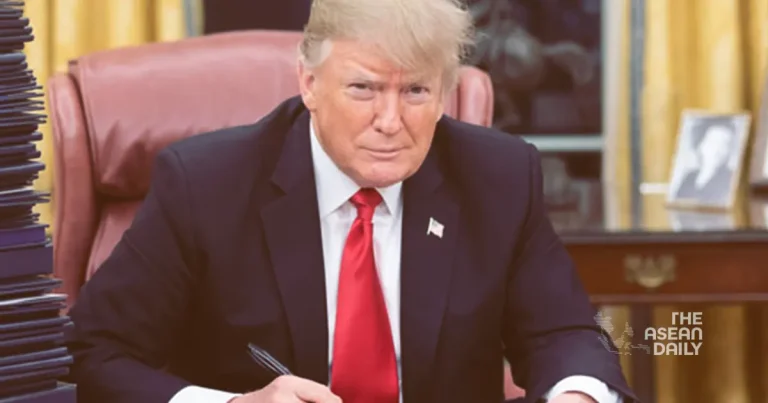24-2-2025 (WASHINGTON) US President Donald Trump has detailed his administration’s muscular approach to countering what he perceived as BRICS nations’ attempts to challenge the US dollar’s supremacy.
The expanded BRICS alliance, which now encompasses Brazil, Russia, India, China, South Africa, Egypt, Ethiopia, Iran, the UAE, and Indonesia, had allegedly contemplated establishing an alternative currency system, potentially centred around the Chinese yuan.
Trump’s confrontational strategy evolved from an initial warning of 100% tariffs to an even more aggressive stance, threatening a punishing 150% levy on imports from any BRICS nation that dared to “mention the destruction of the dollar”. The former president’s stark ultimatum included a complete cessation of trade relations with such countries.
In what appears to be a pointed critique of his successor’s approach, Trump contrasted his robust response with what he characterised as President Joe Biden’s more passive stance towards BRICS’ currency ambitions. According to Trump, whilst Biden viewed the situation as intractable, his own administration had devised a decisive counter-strategy.
The BRICS consortium’s reaction to these revelations has been notably measured. Russian President Vladimir Putin, whilst advocating for increased use of national currencies in international trade, has carefully emphasised that the bloc harbours no immediate intentions to abandon the dollar-based system.
However, this diplomatic posture masks underlying tensions, with certain BRICS members, particularly Iran, maintaining their support for a unified currency initiative. This suggests a delicate balance between practical financial diversification and more ambitious plans for monetary independence.
The president’s claims of having effectively neutralised the BRICS currency threat reflect a broader narrative of his administration’s approach to international economic relations, characterised by aggressive negotiating tactics and the wielding of America’s considerable trade leverage.




